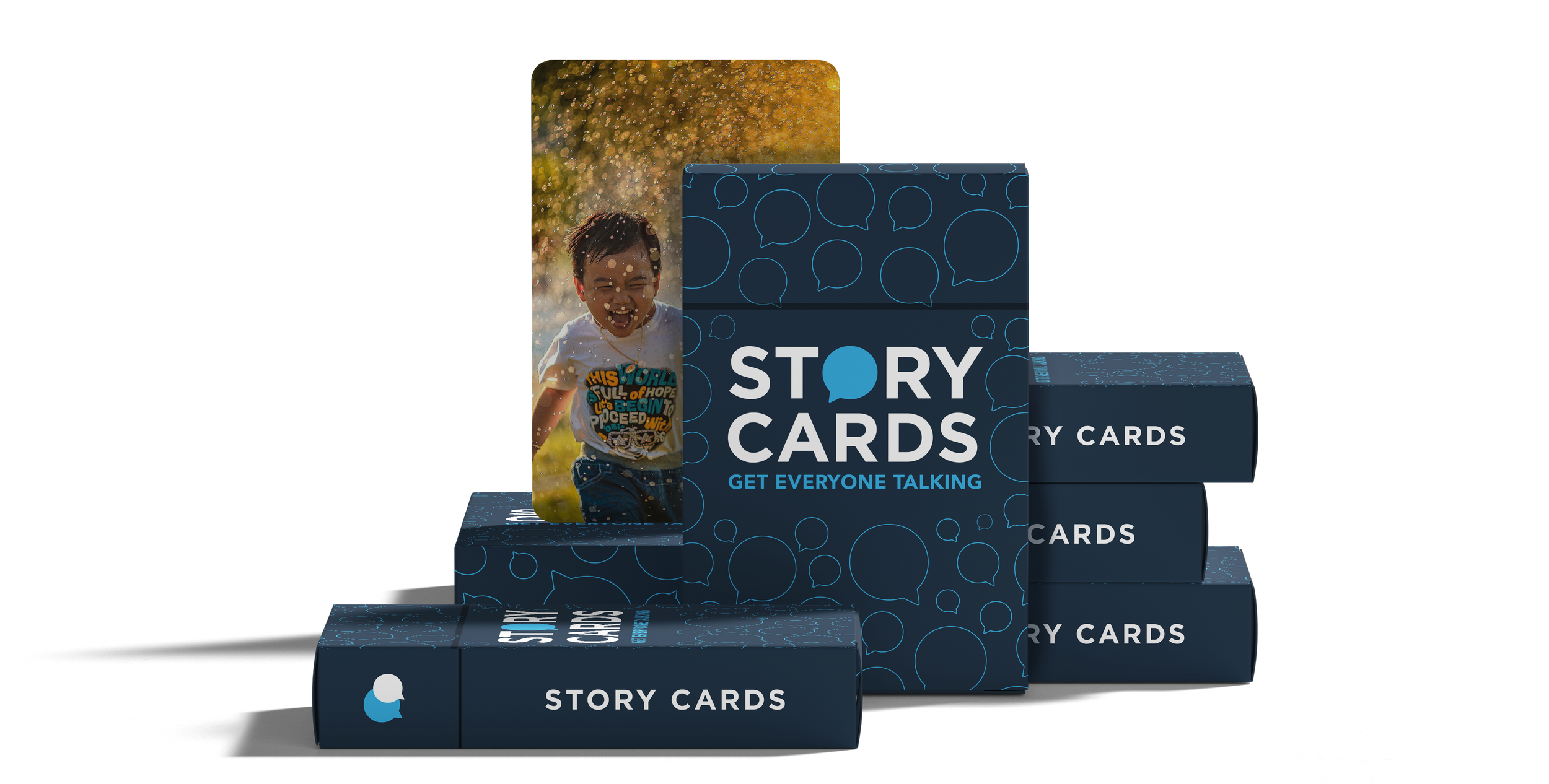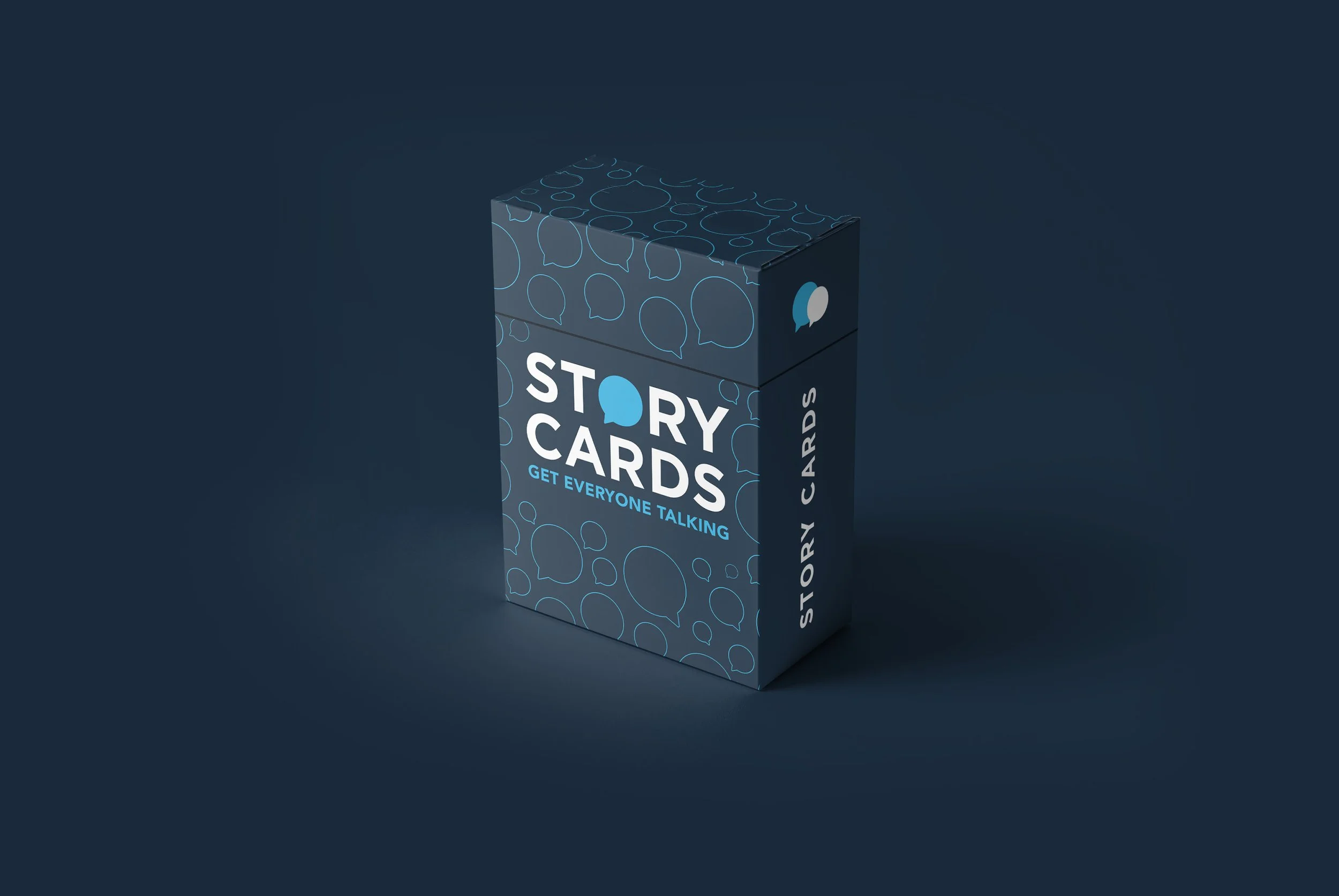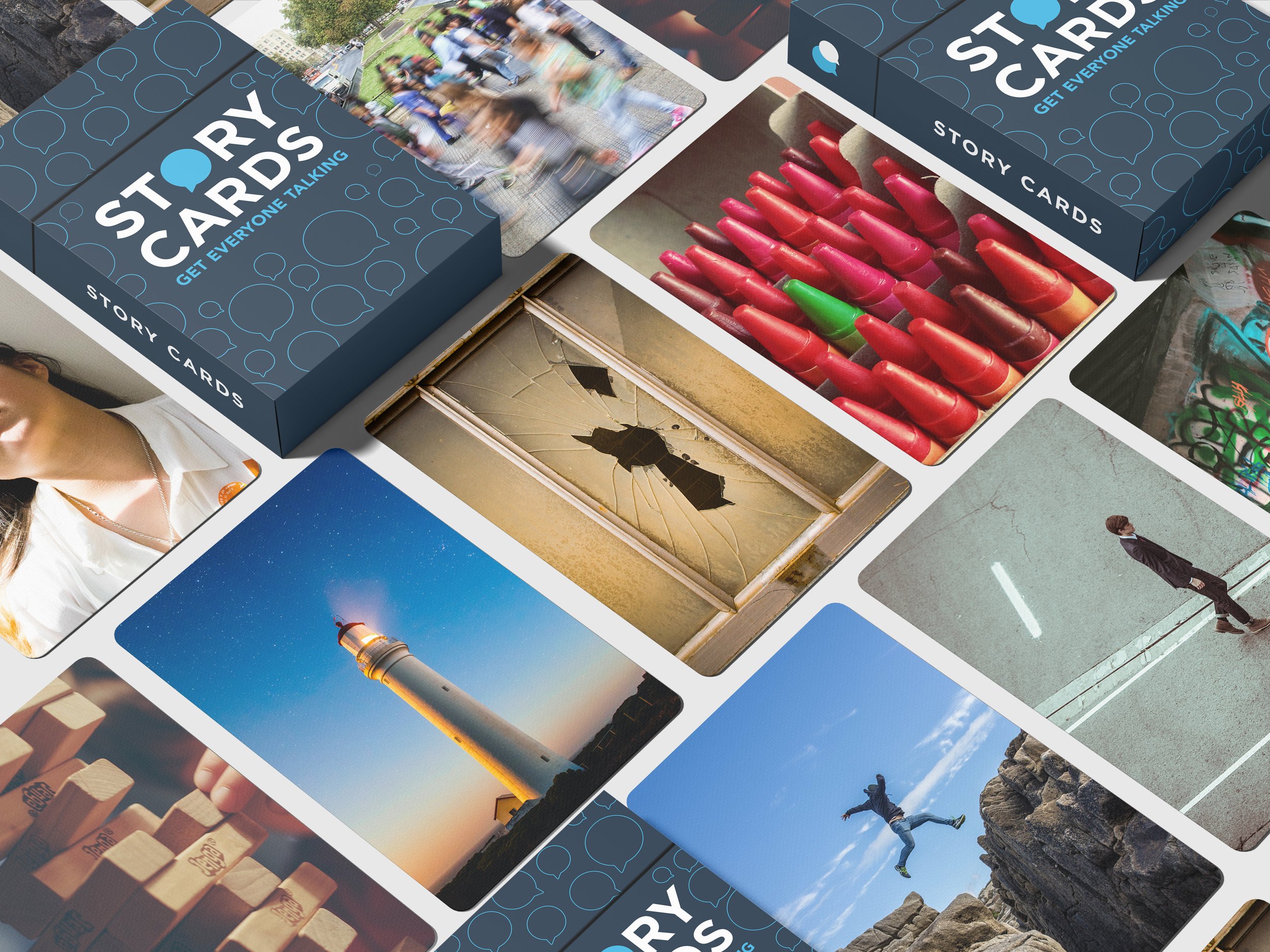Story Cards
Designing a Product to Solve Silence
Some groups jump right into conversation. Most don’t.
Awkward silences, blank stares, the uneasy feeling of not knowing where to start — that’s the gap Story Cards were built to bridge.
This wasn’t just a creative challenge. It was a psychological one: could design help people find words when they didn’t have any, and start talking about the things that matter?
CREATIVE DIRECTION | PHOTOGRAPHIC ART DIRECTION | PRODUCT DESIGN

The Challenge
The problem wasn’t “what do Story Cards look like?” It was what do they need to do?
From therapy groups to classrooms, from faith conversations to political discussions, people often need help getting started. The challenge was to create a tool simple enough to work anywhere, but powerful enough to unlock real conversation.
It had to:
Lower the barrier for people who feel nervous or uncomfortable.
Work across a wide range of settings (care, education, faith, community).
Spark honest dialogue without forcing it.
The Creative Process
The breakthrough came from listening to leaders across different group settings. Again and again, we heard the same thing: when words fail, images step in. Participants would point to a picture on a wall, a photo in a book, even a piece of art nearby and say, “I feel like that.” They didn’t always know why — but the picture gave them a way in, a metaphor that opened the door to conversation.
If images could do that accidentally, we realized they could also do it intentionally.
We began with a feelings wheel and narrowed it down to a curated list of 40–50 emotional words we wanted to capture visually.
Photography sourcing: Partnered with local photographers, paying them hourly to surface existing images. Selected photos were licensed at a set rate.
Image pool: Collected over 1,000 images tied to the emotional word list.
Focus groups: Invited participants to physically sort through images, eliminating what didn’t resonate and refining down to the strongest options.
Live testing: Tried different card versions in real settings — from small groups to care programs — to see which ones truly sparked conversation.
The design also carried a subtle nod back to the organization’s Starting Point Curriculum, creating continuity for users already familiar with that material.
Why It Worked
Unique Solution
Turning a psychological barrier (awkward silence) into a design challenge solved with images.
Participatory Design
Using focus groups and live testing to refine images that genuinely sparked conversation.
Design Empathy
Framing conversation through imagery so anyone could participate, regardless of comfort with vulnerability.
The Experience
The final deck gave facilitators a simple but powerful tool.
Instead of asking, “How are you feeling?” facilitators could say: “Which picture feels like your life right now?”
Instead of forcing a conversation, the cards offered a visual shortcut to honesty.
The tactile nature of the cards created an easy, low-pressure way to participate — even for people reluctant to speak first.
























The Outcome
The Story Cards set was printed, released, and quickly became the organization’s best-selling product.
Now in its third edition, it continues to sell thousands of sets every year and remains the publisher’s top-selling product annually.
It has grown almost entirely through word-of-mouth adoption, with increasing digital marketing efforts expanding its reach even further.
It’s used in settings ranging from classrooms to counseling to churches — anywhere people need help starting hard conversations.
The strong and enduring success confirms that a well-designed product can do more than look good — it can change the way people talk to each other.









